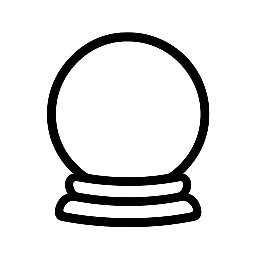Kabbalah, an ancient Jewish mystical tradition, has long been shrouded in mystery and intrigue. At its core lies the Tree of Life, a complex symbol that has been interpreted and reinterpreted over the centuries. This intricate diagram, composed of ten interconnected spheres, is believed to hold the secrets of the universe and the nature of the divine. In this article, we will delve into the hidden language of the Tree of Life, exploring the symbolism and mysteries that lie within.
Introduction to the Tree of Life
The Tree of Life, also known as the Otz Chaim in Hebrew, is a visual representation of the Kabbalistic understanding of the universe. It is comprised of ten sephirot (spheres), which are connected by a series of paths and channels. These sephirot represent different aspects of the divine, ranging from the infinite and unknowable Keter (crown) to the physical and material Malkhut (kingdom). The Tree of Life is often depicted with the sephirot arranged in a specific pattern, with the higher spheres representing more spiritual and abstract concepts, and the lower spheres representing more physical and concrete realities.
Symbolism of the Sephirot
Each of the ten sephirot on the Tree of Life is associated with a unique set of symbolism and attributes. The sephirot are grouped into three main categories: the upper three, which represent the intellectual and spiritual realms; the middle three, which represent the emotional and psychological realms; and the lower four, which represent the physical and material realms. Some of the key symbolism associated with the sephirot includes:
- Keter (crown): represents the infinite and unknowable divine, often associated with the concept of nothingness or Ain.
- Chokhmah (wisdom): represents the divine wisdom and creativity, often associated with the concept of inspiration and intuition.
- Binah (understanding): represents the divine understanding and intelligence, often associated with the concept of analysis and discernment.
- Chesed (loving-kindness): represents the divine loving-kindness and compassion, often associated with the concept of mercy and forgiveness.
- Gevurah (strength): represents the divine strength and discipline, often associated with the concept of boundaries and self-control.
- Tiferet (beauty): represents the divine beauty and harmony, often associated with the concept of balance and equilibrium.
- Netzach (eternity): represents the divine eternity and endurance, often associated with the concept of persistence and determination.
- Hod (splendor): represents the divine splendor and majesty, often associated with the concept of communication and expression.
- Yesod (foundation): represents the divine foundation and basis, often associated with the concept of stability and grounding.
- Malkhut (kingdom): represents the divine kingdom and physical reality, often associated with the concept of manifestation and materialization.
Interpreting the Paths and Channels
In addition to the symbolism of the sephirot, the paths and channels that connect them also hold significant meaning. These paths and channels represent the various ways in which the different aspects of the divine interact and influence each other. They can be thought of as a kind of “circuitry” that underlies the universe, governing the flow of energy and consciousness between different levels of reality. Some of the key principles for interpreting the paths and channels include:
- The concept of tzimtzum (contraction), which refers to the idea that the divine contracts or limits itself in order to create a sense of separation and distinctness between different levels of reality.
- The concept of reshimot (impressions), which refers to the idea that the divine leaves behind impressions or residual energies that can be accessed and utilized by human beings.
- The concept of gilgulim (cycles), which refers to the idea that the divine energy cycles and recycles through different levels of reality, influencing and shaping the world in complex and subtle ways.
Practical Applications of Kabbalah Symbolism
While the symbolism of the Tree of Life can seem complex and abstract, it has many practical applications in fields such as meditation, magic, and personal growth. Some examples of how to apply Kabbalah symbolism in a practical way include:
- Using the sephirot as a framework for meditation and visualization, focusing on specific attributes and qualities associated with each sphere.
- Utilizing the paths and channels as a kind of “energetic mapping” to understand and navigate different levels of reality.
- Applying the principles of tzimtzum, reshimot, and gilgulim to understand and work with the complex and subtle forces that shape the world.
Conclusion
The hidden language of the Tree of Life is a rich and complex system of symbolism that offers insights into the nature of the universe and the human condition. By exploring the sephirot, paths, and channels of the Tree of Life, we can gain a deeper understanding of the intricate web of energies and forces that shape our world. Whether used as a tool for personal growth, magical practice, or simply as a framework for understanding the mysteries of the universe, the symbolism of the Tree of Life is a powerful and enduring legacy of the Kabbalistic tradition.


Leave a Reply